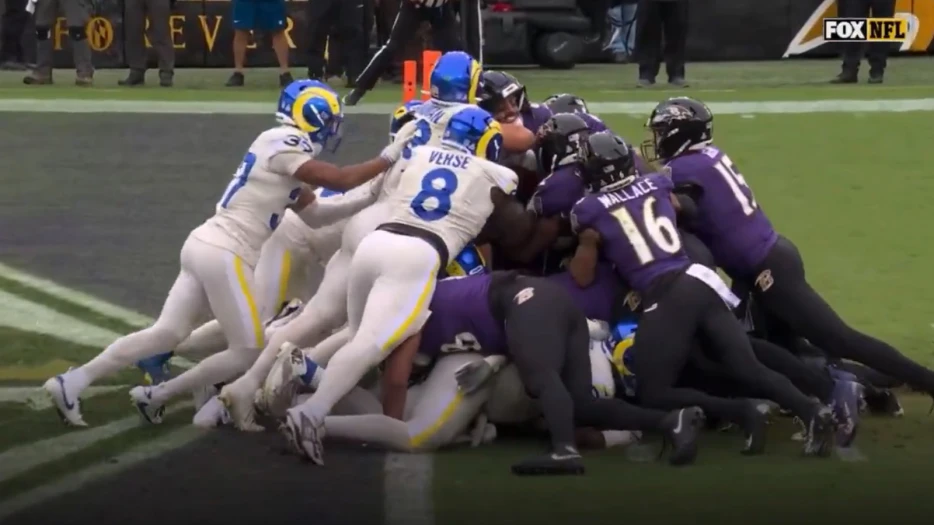
The Baltimore Ravens chose to attempt a Tush Push against the Los Angeles Rams on Sunday instead of giving the ball to Derrick Henry. They proved why the play should not be banned.
It was an epic failure.
If the NFL can figure out how to properly enforce its most controversial play, there is a way to stop it. Perhaps the Ravens should’ve let their monstrous running back pound the rock instead.
Player safety was primary catalyst for the attempted Tush Push ban last offseason. The vote ultimately failed.
There is not any legitimate data to prove that injury rates are higher on the Tush Push than on any other play. It was an irrelevant argument. Player safety was not at risk.
However, as we have seen this season, there is a new call to ban the Tush Push because of the officiating challenges it presents.
The Philadelphia Eagles often commit a false start on the play, which gives their offensive line an extra advantage in the rugby-like scrum. The NFL tried to erase all evidence of such wrongdoing from the internet just last month with copyright strikes. It failed to do so on Thursday.
The Eagles ran four-straight Tush Push plays against the New York Giants. Documented video evidence very clearly shows the offensive line move before the ball was snapped.
To try and ban the Tush Push because it is hard to officiate presents a much more logical case than player safety. However, the league should just do a better job of calling false starts.
Regardless of whether you like the play or not, a properly-officiated Tush Push is completely legal. Philadelphia just does it better than everyone else. Try and stop them. If you can’t, so be it.
Take Sunday for example.
The Ravens had 1st-and-goal at the 4-yard-line. Henry went three yards on first down. He did not get the opportunity to punch it in on second or third down. Baltimore went with a Tush Push instead.
Mark Andrews failed to cross the goal line on both attempts. In fact, the ball was actually ripped out of his arms and the ball was loose, which the Rams would’ve been able to advance (likely for a 99-yard touchdown) if the play was not called dead. That is another discussion. Take a look: